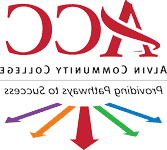紧急医疗服务 (EMS)
技术标准
工作概述
Qualified applicants are expected to meet all admission criteria as well as essential
功能. Students requesting reasonable 住宿 to meet these criteria must
inform the 项目负责人 in writing of the need for 住宿 at the time
入学. The student is expected to contact the ADA counselor in the new ESC
(Enrollment Services Center) to file the appropriate forms documenting the need for
住宿.
|
功能 |
代表 活动/属性 |
例子 |
|
粗大运动 技能 |
|
Function in a mobile environment: move about in an ambulance in order to perform procedures 在病人身上. Must also read patient chart, equipment settings, and/or equipment 显示. 坐下来记录调查结果. Change equipment settings above head and below waist, plug electrical appliance into wall outlets. |
| 精细运动技能 |
|
Lift medication vials to eyes to read. Squeeze medication vials to empty. 把握住 and read small instruments such as volume measuring devices. 填写病历. 在病历中记录患者数据. Change settings on equipment by turning knob and observing 改变. |
| 物理 耐力 |
|
Stand and perform repetitive procedure(s) on patients such as Chest 物理 Therapy 和心肺复苏. Repeat this procedure periodically throughout a 12- to 24-hour shift. |
| 物理 强度 |
|
Assist patient from bed to chair. 把病人从床上扶起来. 把病人从担架上移开 上床再回来. Carry medications, pulse oximeter, stethoscope or other equipment 去不同的地方. Push ventilator or other heavy equipment ambulance to patient 反之亦然. Move other equipment such as Pulse Oximeter, IPPB or IPV machine. 将设备从 bed height to shelf height above chest level. |
| 批判性思维 | Sufficient for emergency medical judgment | Make independent judgments in a physician’s absence. Determine treatment priorities. Make quick life-saving decisions. |
| 人际关系 |
Sufficient to interact with individuals, families and groups from a variety of social, emotional, cultural, and intellectual backgrounds |
生死状况. Family stress of patient’s illness. 同伴压力来自临界 事件. Cultural diversity in reactions to illness or injury. |
| 沟通 | Sufficient for interaction with others in verbal and written form | Radio report of patient 条件. Comprehensive written reports of patient 条件 和治疗. Verbal report to other health care providers. |
|
流动性 |
|
Work in natural and man-made disasters. Move patients from 事件 to safety. |
| 听力 |
|
听诊呼吸音. 与病人交谈. Work around loud equipment and 在巷道. Hear radio transmissions and pager tones. 电话交谈. |
| 阅读 | Read and understand written documents | Read and interpret physician orders, physician, therapist and nurses notes. 读取 计算机显示器屏幕. Gather data reasonably accurate, and in a reasonable amount of time to ensure safe and effective patient care relative to other care givers. |
| 数学能力 |
|
Read and interpret patient graphics charts and graphic 显示. 进行基本算术运算 功能 in order to calculate dosages, weights, and other measurements. |
| 情绪稳定 |
|
Provide for safe patient care despite a rapidly changing and intensely emotional environment. Perform multiple tasks concurrently, example: delivery of medication or oxygen in one room while performing an arterial blood gas in another such as in an emergency 房间环境. Maintain enough composure to provide for safe and effective patient care despite crisis 情况下. |
| 分析思考 |
|
Evaluate different sources of diagnostic information to help arrive at a patient diagnosis. Evaluate priorities in order to provide for the most appropriate care. 适当地 evaluate data in order to notify physician and nursing when necessary. |
| 愿景 |
足以:
|
阅读和撰写报告. Visualize mechanism of injury in relation to patient’s 条件. Describe size and shape of wound. 描述病人的肤色. |
| 触觉 |
Sufficient for physical assessment. |
执行触诊 |
| 环境调整 | 能力 to provide patient care in a variety of locations and 条件s. | Deliver patient care in all weather 条件s, in water, mud, roadways, fields, buildings, high and low elevations, in hot or cold air temperatures. |
| 浓度 | Concentrate on details with moderate to severe amount of interruptions |
|
大学 & 职业生涯路径
紧急医疗服务 is part of our Health Career Pathway. 点击下面的方框 to see other Health programs that may interest you.

